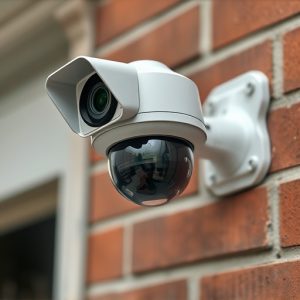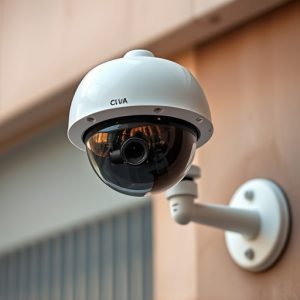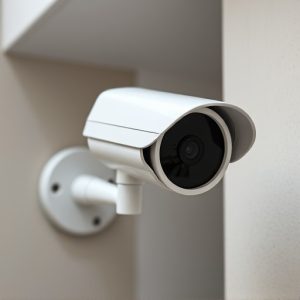Optimize Dummy Camera Placement: Deter Crime Effectively
Strategic placement of realistic dummy security cameras significantly deters criminal activity. Thei…….
Strategic placement of realistic dummy security cameras significantly deters criminal activity. Their visual presence mimics actual surveillance, intimidating potential offenders and reducing blind spots. Effective in diverse settings, from urban areas to retail spaces, they foster safety at a lower cost than physical security measures. Advancements in technology, like AI integration, further enhance their deterrence capabilities, solidifying their role as powerful crime prevention tools. (SEO Keywords: Do Dummy Security Cameras Deter Crime)
“Discover the power of dummy surveillance cameras as a strategic tool for crime deterrence. This comprehensive guide explores how these realistic replicas can significantly enhance security without the cost and complexities of real systems. From understanding their role in deterring criminals to optimizing placement, we delve into key factors, common pitfalls, and successful real-world implementations. Additionally, we examine emerging trends in dummy camera technology, providing insights for both professionals and property owners seeking effective crime prevention solutions.”
- Understanding Dummy Surveillance Cameras and Their Role in Crime Deterrence
- Key Factors to Consider for Optimal Dummy Camera Placement
- Common Mistakes to Avoid When Setting Up Dummy Security Cameras
- Case Studies: Successful Implementation of Dummy Cameras in Different Environments
- Future Trends and Innovations in Dummy Surveillance Technology
Understanding Dummy Surveillance Cameras and Their Role in Crime Deterrence
Dummy surveillance cameras, also known as decoy or mock security cameras, are an innovative tool in crime prevention and deterrence. These devices serve as a powerful visual deterrent by simulating real camera systems, often placed strategically to mislead potential criminals. Understanding their role is key to enhancing home or business security.
The primary function of dummy cameras is to create the perception of enhanced surveillance, which can significantly reduce the likelihood of criminal activity. By mimicking the appearance and placement of actual security cameras, they act as a psychological barrier, making would-be offenders think twice before attempting any malicious acts. This simple yet effective strategy has been proven to deter crime, as many criminals prefer to target areas where their actions may go unnoticed or unrecorded.
Key Factors to Consider for Optimal Dummy Camera Placement
When placing dummy surveillance cameras, there are several key factors to consider for optimal positioning and effectiveness in deterring crime. The first factor is location; strategically choosing high-traffic areas or places where valuable assets or sensitive information are stored can significantly enhance the camera’s deterrent effect. Dummy cameras installed in these locations send a clear message to potential criminals that their actions are being watched, potentially discouraging illegal activities.
Another crucial aspect is realism. High-quality dummy cameras that closely resemble real security cameras can be more effective in deterring crime than less realistic counterparts. The appearance and placement of the camera should align with genuine surveillance systems to maximize its psychological impact on would-be offenders. Moreover, the orientation and field of view should cover potential blind spots or entry points, ensuring a comprehensive visual monitoring capability.
Common Mistakes to Avoid When Setting Up Dummy Security Cameras
When setting up dummy security cameras, there are several common mistakes to avoid if you want them to effectively deter crime. One of the biggest blunders is misplacing or poorly positioning the cameras. While it might seem like a simple task, aligning the camera’s field of view with potential trouble spots is crucial. Often, people place them in plain sight without considering strategic angles that can capture critical areas, leaving blind spots where criminals could operate unnoticed.
Another mistake is not simulating actual activity. Dummy cameras must appear active to send a clear message to potential intruders. This means avoiding static positions and instead using flexible mounts to adjust the camera’s orientation. Additionally, consider incorporating motion-activated features or regular maintenance routines, like periodic adjustments or battery changes, to keep them appearing functional. Remember, the goal is not just to have cameras but to make them appear vigilant sentinels, effectively discouraging criminal activity through deterrence.
Case Studies: Successful Implementation of Dummy Cameras in Different Environments
Dummy surveillance cameras have been successfully implemented in various environments, offering a cost-effective solution for enhancing security while providing a sense of safety. Case studies show that their strategic placement can significantly deter crime. For instance, in urban areas, dummy cameras mounted on poles or buildings can deter vandals and thieves who are put off by the visible presence of surveillance, even if the cameras are not functional.
In commercial spaces like retail stores, dummy cameras positioned at entrances, exits, and high-value item areas create an illusion of constant monitoring, encouraging honest behavior among patrons. This tactic has been particularly effective in deterring shoplifters. Moreover, in residential neighborhoods, dummy cameras installed in common areas or on streetlights can act as a psychological barrier against criminal activity, promoting a sense of community safety.
Future Trends and Innovations in Dummy Surveillance Technology
As technology advances, dummy surveillance cameras are evolving beyond simple replicas. Future trends include integration with AI for facial recognition and motion detection, making them smarter and more effective deterrents. These innovations can enhance real-time monitoring capabilities, allowing for immediate alerts and improved security responses. Additionally, customizable design options mean they can blend seamlessly into various environments, from urban centers to rural areas.
The role of dummy security cameras in crime prevention is gaining recognition. While they don’t physically stop crimes from occurring, their strategic placement sends a powerful message to potential perpetrators. The mere presence of these cameras can act as a psychological deterrent, discouraging illegal activities and creating a sense of enhanced security within communities. With continuous technological advancements, dummy surveillance technology is set to play an increasingly vital role in public safety.
Dummy surveillance cameras, while not active, play a significant role in crime deterrence by simulating a vigilant security presence. By strategically placing these decoys, as discussed in this article, businesses and individuals can significantly enhance their safety measures. Key factors like visibility, placement angles, and realism are crucial for optimal effectiveness. Avoiding common setup mistakes ensures maximum impact. Case studies highlight successful implementations across diverse settings, demonstrating the versatility of dummy cameras. As technology evolves, expect advancements that further improve crime deterrence capabilities, solidifying the value of these devices in today’s security landscape.


